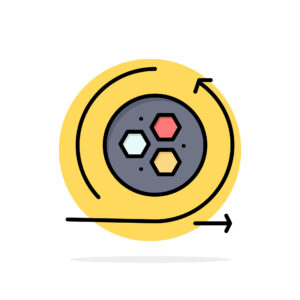
Ayurveda stands as the world's most ancient healthcare system, originating over 5,000 years ago in India. Distinguished by its emphasis on preventive lifestyle practices such as seasonal eating, periodic fasting, daily physical activity, and meditation, Ayurveda offers a holistic approach to well-being. A key tenet of Ayurveda is the recognition of bio-individuality, asserting that no single diet or lifestyle suits everyone due to our unique and diverse natures, akin to individual snowflakes. What proves beneficial for one person may have adverse effects on another, a principle that extends to exercise. In Ayurveda, exercise recommendations are intricately tied to one's dosha (constitution type), age, local climate, and the prevailing season, highlighting the personalized nature of this ancient health philosophy for contemporary times.
Understanding doshas

Ayurvedic philosophy is grounded in the belief that the universe comprises five elements – space (ether), water, earth, fire, and air. The interaction of these elements gives rise to three humors, or doshas, categorizing individuals, food, and activities into distinct body types or energies. The three doshas are Vata (air and ether elements), Pitta (fire and water elements), and Kapha (water and earth elements).
Vata – Creative and adaptable
Vata, often described as the creative and imaginative dosha, is characterized by a tendency to think outside the conventional boundaries, although they can be prone to distraction. Individuals dominated by Vata exhibit variability and unpredictability, with cooler body temperatures, weak digestive systems, and a predisposition to dryness leading to issues such as gas, bloating, and constipation. Typically possessing naturally slender bodies, Vatas struggle to gain both muscle and fat. With a hyper-metabolic nature, Vatas experience quick bursts of energy but struggle with endurance. To align with their active disposition, Vata-dominant individuals benefit from activities involving constant movement, such as cycling, running, walking, yoga, and tai chi. Slow and steady strength training, TRX bands, dynamic stretching, barre, and exercises enhancing balance and grounding are recommended for Vatas. Due to their susceptibility to joint issues, they should focus on proper form in exercises like lunges, squats, and resistance training to build muscle safely, avoiding overly depleting and intense workouts like CrossFit® or boot camps.
Pitta – Assertive and driven
Pitta dosha, characterized as the hot and fiery energy, is linked to individuals with a strong determination to excel, inherent leadership qualities, and a Type A personality. These individuals possess warm body temperatures, robust digestive systems, and substantial appetites that may occasionally result in acidity. With a natural inclination for strength, competitiveness, and athleticism, pitta types are drawn to intense workouts that challenge their bodies to the maximum. However, it is crucial for them to balance their fiery nature by incorporating calming and cooling activities, avoiding excessive heat and over-exertion. Engaging in overly intense exercises can lead to adrenal fatigue and elevated cortisol levels, the stress hormone. Pittas are better suited for muscle-building activities like yoga, Pilates, and swimming that don't overtax the adrenals. Given their sensitivity to heat, practices like hot yoga may lead to burnout and potential injury. Additionally, post exercise meditation is essential for grounding their energy and preventing the carryover of tension throughout the day.
Kapha – Steadfast and supportive
Kapha, characterized as the earth mama dosha, embodies slow, weighty, and hypo-metabolic qualities, known for its reliability and supportive nature. Motivation poses a significant challenge for Kaphas, requiring them to push themselves to exercise, possibly rewarding their efforts with a snack afterward. While they may resist movement and lean towards a sedentary lifestyle, Kaphas, who easily gain weight, benefit immensely from regular exercise to counterbalance their tendencies toward sluggishness and lethargy. Walking, especially uphill, serves as a suitable starting point to get their bodies in motion. Sweating daily becomes crucial for Kaphas, serving as an antidote to their imbalance by reducing moisture and enhancing mobility, coordination, and stamina. Incorporating high-intensity interval training (HIIT) moves, such as jumping jacks and mountain climbers, proves beneficial, along with activities like long-distance running, weightlifting, rowing, and quick moving Vinyasa or hot yoga classes. Remarkably, Kaphas boast the highest endurance among the doshas and can endure longer exercise durations. Overcoming mental barriers and embracing a more active lifestyle becomes the key to unlocking their full potential, fostering overall wellness for the mind, body, and spirit. Understanding that exercise, much like diet, is not a one-size-fits-all concept, empowers individuals to discover the workout routine that resonates with their unique needs, contributing to lasting health and well-being.
Do doshas correspond to body types?
The correlation between doshas and body types is noteworthy, aligning with the concept of somatotypes introduced by Dr. W. H. Sheldon in the 1940s. While the dosha reflects the sum of physical, dietary, and lifestyle choices coupled with genetic and environmental factors, the three primary body types—endomorph, mesomorph, and ectomorph—offer a parallel perspective. Endomorphs, akin to Kapha dosha, exhibit traits of a slower metabolism, a tendency to gain weight easily, and a stockier physique. Mesomorphs, resembling Pitta dosha, boast efficient metabolism, ease in both gaining and losing weight, and an athletic musculature. Ectomorphs, mirroring Vata dosha, possess a faster metabolism, struggle to gain weight and muscle mass, and have narrower hips and shoulders. Hybrids, combining strengths of two body types, offer diverse possibilities. Ecto-mesomorphs (vata-pitta) blend long limbs with broader chests, while endo-mesomorphs (kapha-pitta) showcase muscular, compact bodies. Notably, endo-ectomorphs (kapha-vata) result from lifestyle rather than genetics, characterized by thin legs and midsection fat storage, indicating a sedentary lifestyle and dietary choices. Improving such body types entails adopting suitable diet and exercise practices.

